Hydrangea Schloss Wackerbart - frost-resistant plant
Hydrangea Schloss Wackerbart is a large-leaved variety grown by German breeders who made sure that this flower adorned both royal gardens and the courtyards of ordinary residents.
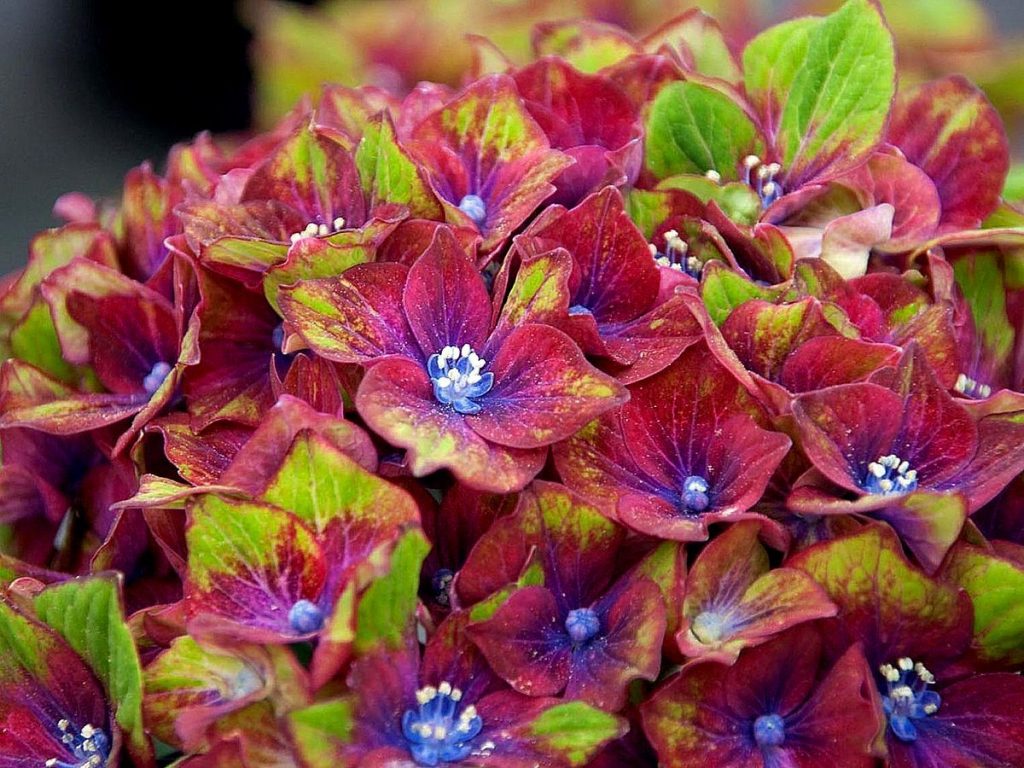
Hydrangea castle wackerbart
Description of the variety
The fabulous name Schloss Wackerbarth translates as "Wackerbuff Castle" (can be read as Wakerbays, Wackerbarth) in honor of the castle of the same name, located near Dresden and turned into a winery.
The variety belongs to the large-leaved hydrangea species Hydrangea macrophylla. It is a chameleon - the flowers gradually turn from green to creamy pink, and then acquire an exotic color: red-crimson petals with strokes of lime green around the edges and a blue-violet center.
Such a description does not convey all the shades - they change depending on the place of planting and the growing conditions of the plant. In autumn, the flowers turn green, a red border appears. The intensity of the color depends on the acidity of the soil - the higher, the brighter.
Flowers are formed on the shoots of the second year and are collected in spherical inflorescences up to 15-30 cm in diameter. Flowering is abundant and lasts from summer to mid-autumn.
The bush is erect, lush, grows up to 1.3 m and 80 cm wide, and multi-colored inflorescences may be present on one branch. The leaves are large, shiny, dark green, with a patterned edge.
The variety is frost-resistant - it winters well at -18-20⁰C under cover, but it can withstand even more severe frosts.
Landing features
Timing
Planting is carried out in April-May, when the soil is already warmed up enough. The bushes planted in spring have time to get stronger before wintering. In the southern regions, it is permissible to plant hydrangeas in the fall.
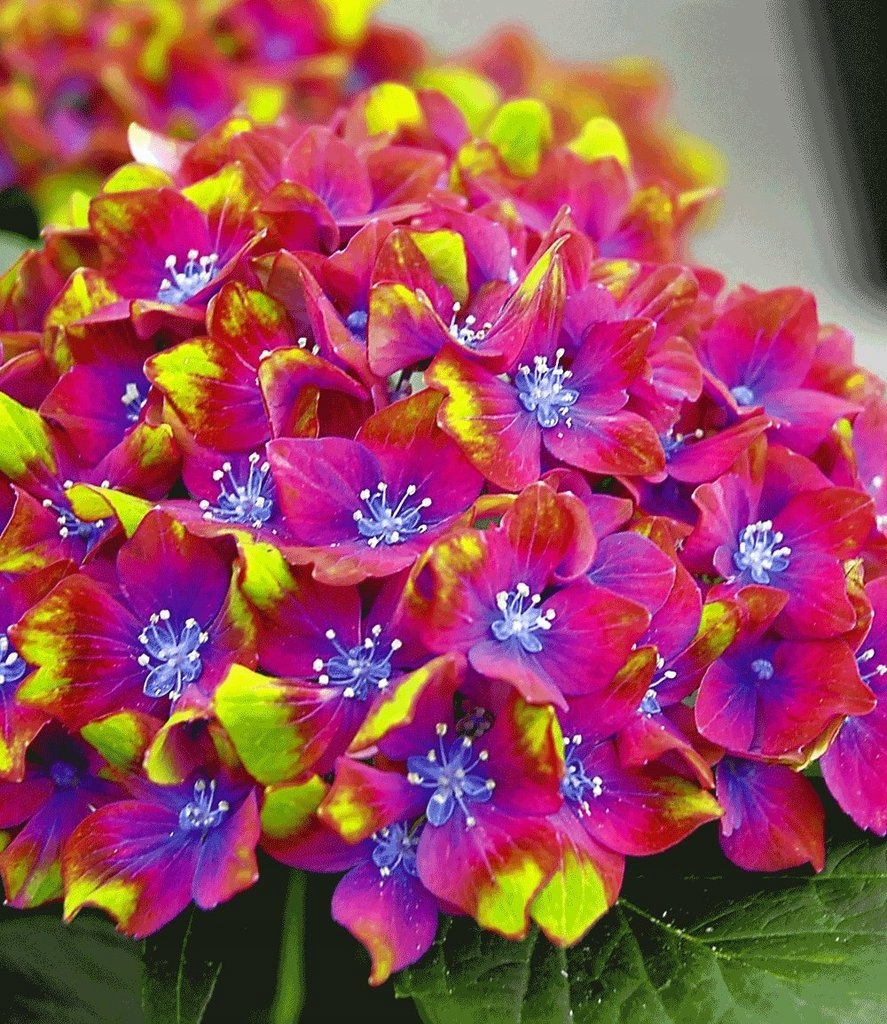
Hydrangea schloss wackerbart large leaf planting and care
Organization of the place
This variety prefers shaded areas with nutritious, loose, well-drained and acidic soil.
The brightness of the color of the petals depends on the quality of the soil, since the aluminum salts, which affect this, are assimilated only in an acidic environment.
Neutral and alkaline soils reduce the decorative effect of the plant, and the leaves can be affected by chlorosis.
The ideal location is partial shade with sun exposure in the morning and evening hours. Due to the growth in the sun, the bush withers. It is desirable that the site be protected from drafts.
Planting holes should be approximately 50 cm deep and wide. The distance between the bushes should be about 1-1.5 m, but it is enough to leave 0.5-0.6 m in the hedges. The holes are prepared two weeks before planting so that the soil has time to settle.
Preparation of planting material
For landing you will need:
- light nutritious soil mixture: 2 shares of peat, 2 shares of garden land, one share of humus and fallen needles. If the soil is alkaline, then it can be acidified or treated with iron chelate.For the manifestation of a brighter blue tint of the inflorescences, ammonium sulfate can be added to the soil;
- drainage - small stones, broken brick, pebbles;
- mulch to prevent the roots from drying out - peat, chopped bark, needles;
- a healthy seedling must have at least two shoots and a healthy root system without whitish bloom and moldy smell; for better survival, it is better that the length of the roots is above 30 cm. Hydrangeas can be purchased in containers; open-root seedlings should be planted as soon as possible.
Landing technology
- A drainage layer is laid at the bottom of the planting pit;
- A seedling with open roots is immersed in water for a while, or watered abundantly if it is in a container. Then they are placed in the wells. If necessary, spread the roots;
- The hole is sprinkled with a soil mixture to form an earthen mound. The soil must be periodically compacted by hand;
- The resulting earthen circle is sprinkled with mulch.
Care
Watering
Large-leaved hydrangea is a moisture-loving plant, therefore, a clod of soil should always be in a moist state, but not wet. It should be watered with rainwater from a barrel or tap water poured into a barrel and warmed up in the sun. It is recommended to organize drip irrigation.
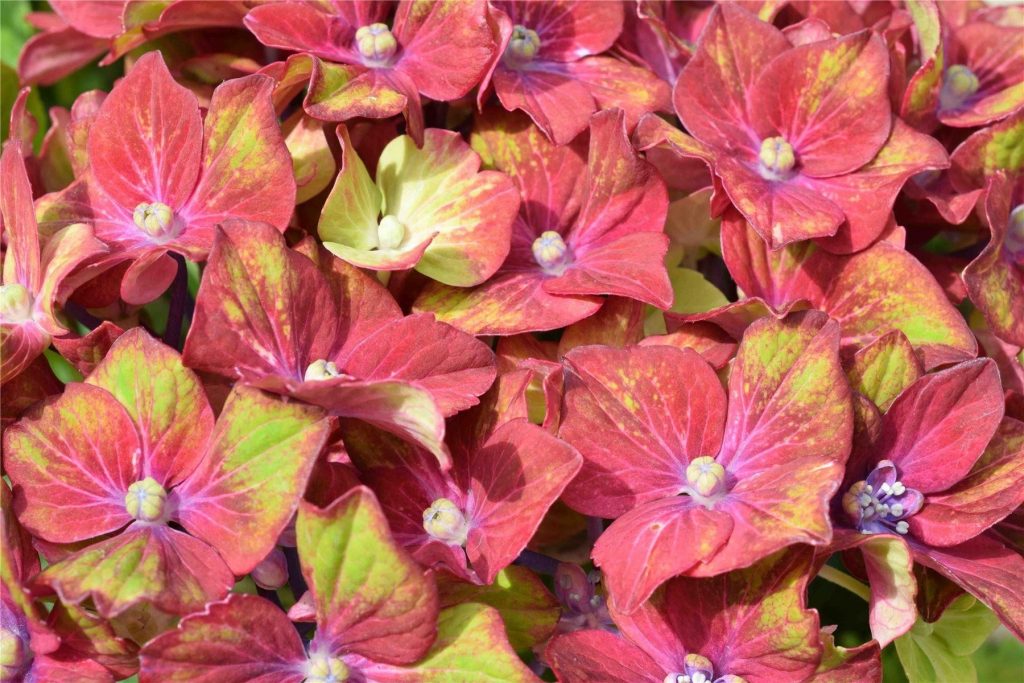
Hydrangea large-leaved schloss wackerbarth
Watering is best done in the morning or evening at the rate of at least two buckets of water per week per bush. At the end of August, watering is reduced to a minimum.
Top dressing
The variety responds well to top dressing, which should be applied under the bush twice a season - at the beginning of summer and during the budding period. Mineral complex, potash, phosphate fertilizers are suitable for this. The plant also responds to organic fertilizers, for example, to a mullein solution.
Gardeners share one secret: if you add alum on only one side of the bush, then it will become multi-colored.
Pruning
Large-leaved varieties of hydrangeas practically do not need pruning. In early spring and autumn, shoots can be shortened for sanitary or decorative purposes. Since flowers appear on last year's shoots, their regular cutting can lead to the cessation of flowering.
Reproduction
Reproduction is carried out in the spring using the following methods:
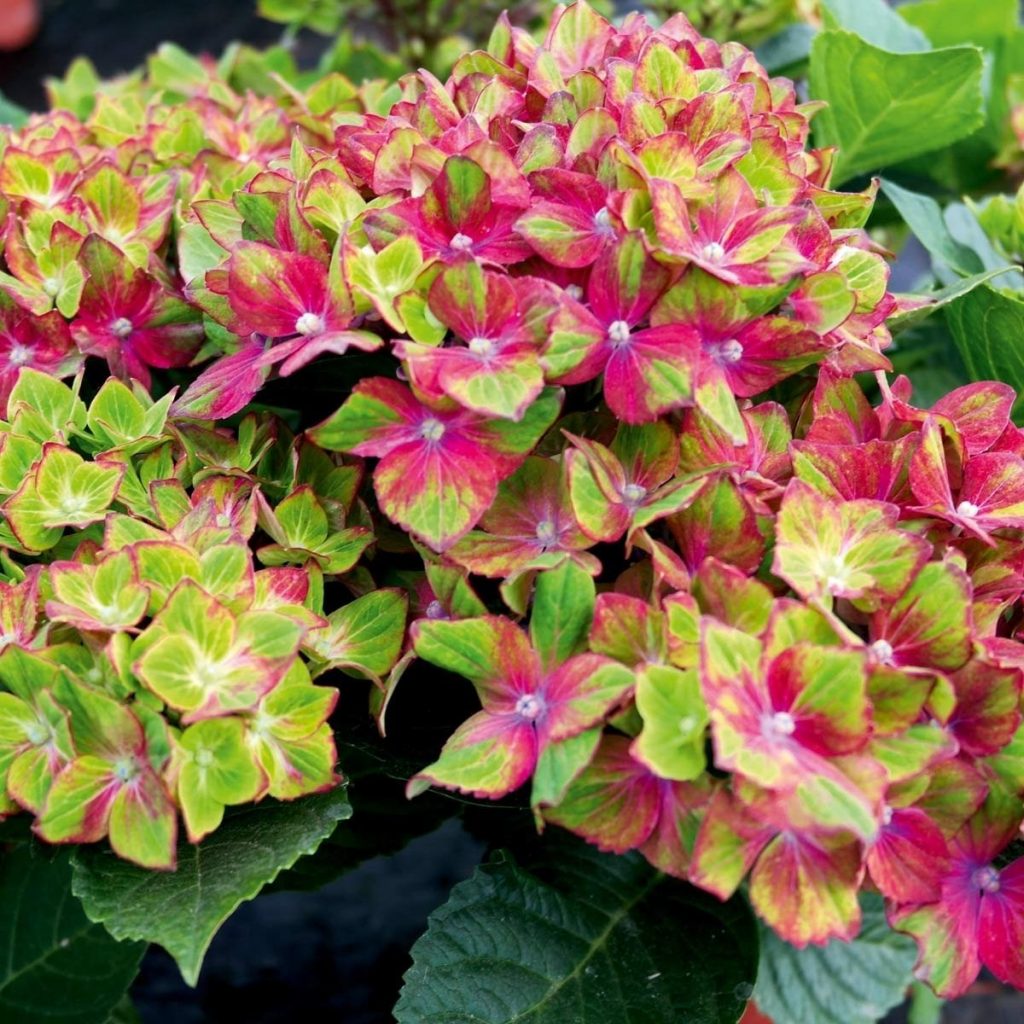
Schloss wackerbarth
- green cuttings of last year's shoots that take root in greenhouses;
- layering of annual shoots - scratch the bark in the middle, bend the branch to the ground, sprinkle the middle part of the shoot with buds with soil;
- dividing a bush is a traumatic method, each resulting bush must have a point of renewal.
With good rooting, seedlings can be planted in a permanent place in the spring after a year.
Diseases and pests: treatment and prevention
| Disease | Symptoms | Treatment | Prophylaxis |
| Metabolic disorders | Yellowing, dropping, blackening, blanching of leaves, wilting. Chlorosis - deformation of buds, blanching and yellowing of the leaves while maintaining the color of the veins due to a lack of iron. | Revision of care and maintenance. The reasons may be bright sun, changes in soil acidity, lack of nutrients, lack or excess of moisture, watering with hard water. | Treatment of bushes in autumn and spring with Bordeaux liquid, treatment of seedlings with copper sulfate, timely cleaning of the flower bed and garden area from plant residues, adherence to the recommended care rules. |
| Fungal and viral lesions | The tissues of shoots and leaves become soft, watery, dark spots appear, gray bloom, leaves are deformed. | Fungicide treatment. If the lesion is extensive, the diseased parts should be removed. | |
| Infection with parasites (spider mites, aphids, root nematodes) | Withering, deformation of leaves and buds, the appearance of insects and spots. | Insecticide treatment. |
Use in landscape design
The large-leaved variety of hydrangea Schloss Wackerbart looks great both in single plantings and in group - in shady perennial mixborders.The best neighbors are moisture-loving trees and shrubs. Hydrangea looks especially beneficial paired with lilacs, spirea, juniper, boxwood, cotoneaster.
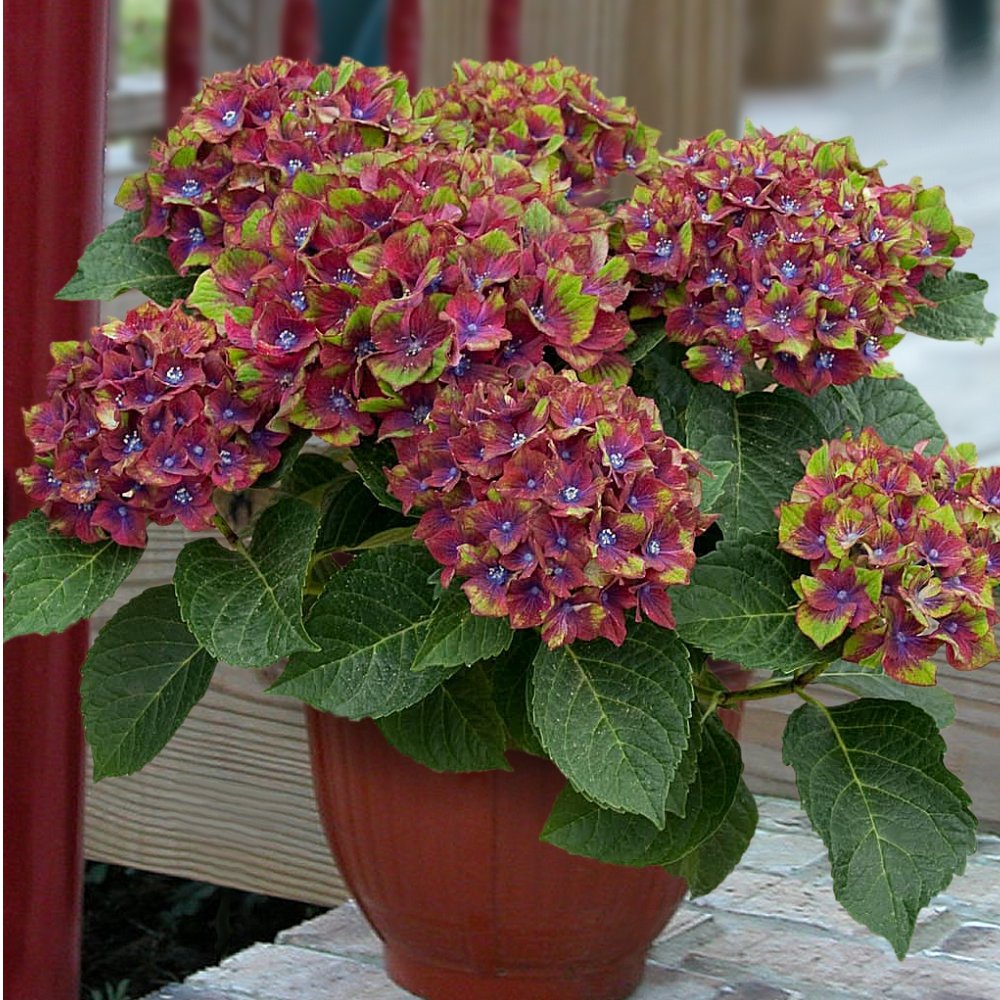
Hydrangea large-leaved schloss wackerbart
This lush flowering shrub is traditionally used to decorate fences, giving the garden a touch of elegance.
Can be grown in pots.
Testimonials
The spread of the variety was facilitated not only by decorative and original flowering, but also by its amazing unpretentiousness. But according to gardeners, despite the simple care recommendations, everything is not so simple in practice, since the problem is maintaining optimal soil moisture and ensuring proper drainage.
However, all the efforts are worth it - many call the presented variety "incomparable" because of the rich color of the flowers, which persist until late autumn and bring a special festivity to the garden.

